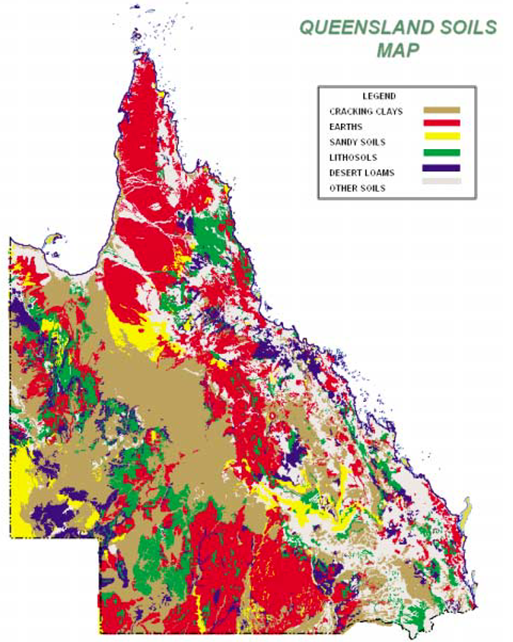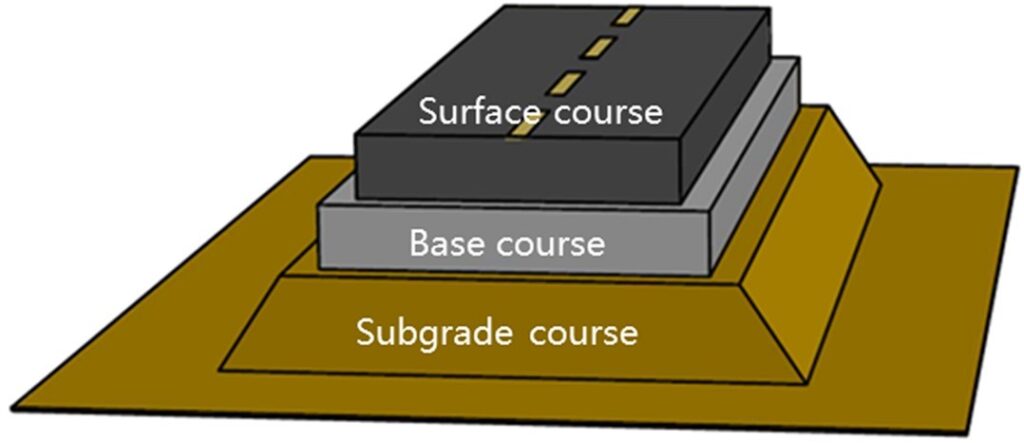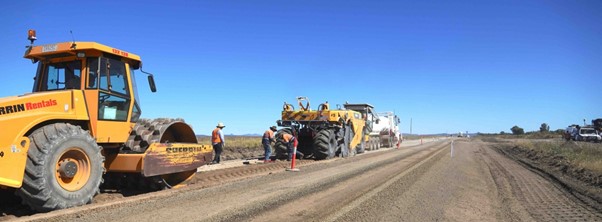Granular pavement design is a crucial aspect of road construction, particularly in western Queensland where the harsh climatic conditions coupled with “black soils” can take a toll on the road surface (resulting in undulations and/or structural pavement failure).
What are black soils?
Soft, deep, fertile black and brown soils make up a large part of Queensland’s geology. These cracking Clays are commonly termed “Black Soils” or can also be defined as “Grey Brown and Red Clays” and “Black Earths”.
Black soils are generally clayey, deep and impermeable. These soils swell and become sticky when wet and shrink when dried (hence, during the dry season, these soil develop wide cracks which can be referred to as a kind of ‘self ploughing’).
While self-ploughing can be good for growing seeds, it has a detrimental impact on road infrastructure if not managed properly.
Black soils occupy approximately one third of Queensland’s land mass and they occur in three generic variants:
- Residual black soils (generally around the Central West of Queensland)
- Alluvial black soils (generally around the Warrego and Flinders Highways)
- Residual black soil (generally around the Darling Downs, Central Highlands and Northern Tablelands)
If you’re driving along a country highway and notice that the power poles and fence posts are slightly crooked, leaning at strange angles, you’re driving through black soil country (refer to Figure 1 for an overview of black soil or “cracking clays” locations).

What are design considerations?
There are various factors that need to be considered while designing granular pavements for western Queensland, with the pavement structure generally considered in the layers described in Figure 2. While not an exhaustive list, a brief description of design inputs shown in Table 1.

Table 1 – Summary of design elements to be considered
| Element | Requirements |
| Subgrade Conditions | The subgrade soil is the layer of soil that lies below the pavement and supports the weight of the vehicles. In western Queensland, the subgrade soil is often prone to swelling and shrinkage due to harsh climatic conditions. Therefore, it is important to choose a granular material that is stable and will not be prone to plastic deformation under the changing climatic conditions. The granular material should also have good drainage properties to prevent waterlogging and the formation of potholes. |
| Traffic Volumes | The first and foremost factor that needs to be considered while designing granular pavements for western Queensland is the type of traffic that the road will be subjected to. This includes the volume of traffic types, measured by Annual Average Daily Traffic (AADT), types of vehicles that will be using the road, measured as percentage of heavy vehicles (%HV) and the maximum load that the road will need to bear. The traffic characteristics will influence the size and gradation of the granular material that is used in the pavement, as well as the thickness of the pavement layers. |
| Material Selection | The pavement design process for granular pavements in western Queensland involves several steps, including the determination of the design traffic, the selection of the granular material, the determination of the thickness of the pavement layers, and the calculation of the pavement structure. Black soils often require stabilisation of the subgrade material which can be treated by methods including (but not limited to) lime stabilisation and foamed bitumen stabilisation. The surface course is usually a bitumen spray seal for roads that are surfaced (as opposed to using concrete or asphalt). |
| Design Calculations | There are several design methodologies that are used to design granular pavements, including the empirical method, mechanistic-empirical design method, the layer thickness design method, and the flexible pavement design method. The mechanistic-empirical design method is based on the principles of mechanics and takes into account the stresses and strains that the pavement is subjected to under the design traffic. The layer thickness design method involves the calculation of the thickness of each layer of the pavement based on the load-carrying capacity of the granular material. |
Once the design is completed with stabilisation or replacement of expansive soil material, the new durable and stable pavement structure should be built by a competent contractor. An example of a project designed by JJ Ryan Consulting for Isaac Regional Council is shown in Figure 3.

References:
Durack Civil (2020), Golden Mile Road Upgrade (Retrieved 2 January 2023 from https://durackcivil.com.au/projects/golden-mile-road-upgrade/)
Queensland Department of Main Roads (2000), Technical Notes, Western Queensland Best Practice Guidelines, Sols of Western Queensland (WQ32)
